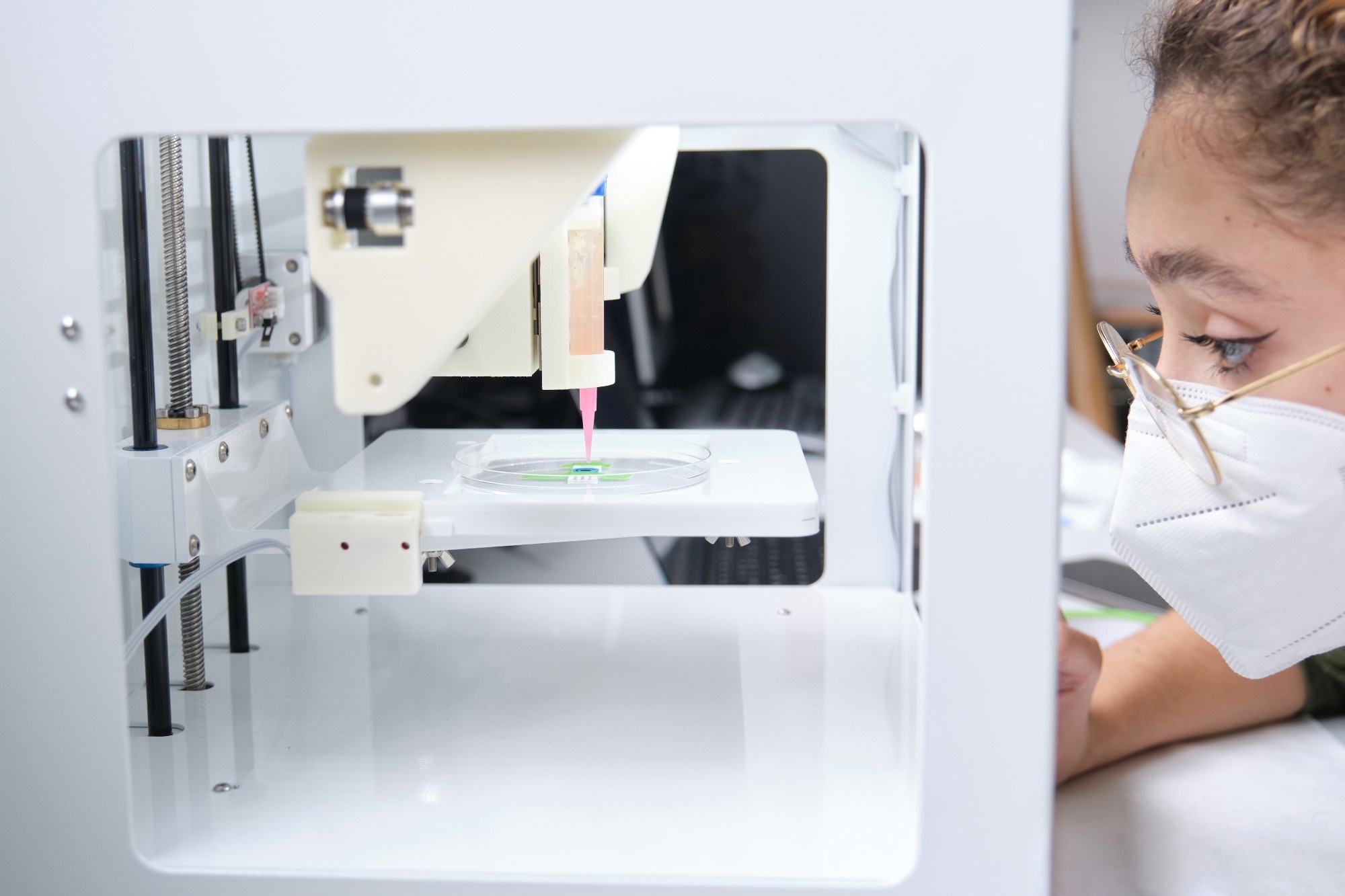 By Pooja Toshniwal PahariaReviewed by Lexie CornerJun 11 2025
By Pooja Toshniwal PahariaReviewed by Lexie CornerJun 11 2025A recent study in Advanced Science presents a method for studying early human embryology by bioprinting epiblast-like structures from human-induced pluripotent stem cells (hiPSCs).
The model forms a disc-shaped structure that resembles the epiblast layer in early human embryos. During gastrulation, the epiblast gives rise to the three germ layers—ectoderm, mesoderm, and endoderm—which later form organs and tissues.
 Image Credit: Ladanifer/Shutterstock.com
Image Credit: Ladanifer/Shutterstock.com
Ethical restrictions and the limited availability of human embryos have long restricted research in this area. This bioprinting method offers an alternative for producing embryo-like models, with potential applications in regenerative medicine, drug testing during pregnancy, and research into congenital disease mechanisms.
Human embryonic development begins with a blastocyst that transitions into a disc-shaped epiblast. Cells in the posterior region of the epiblast differentiate into germ layers, which give rise to all tissues of the human body.
Because access to embryos is limited, experimental research in this field is difficult. Stem cell-derived models may help address this limitation. However, most models lack the throughput or fidelity needed to closely replicate the early human epiblast.
Previous studies have used bioprinting to create organoids from human adipose-derived stem cells and hiPSC-derived hepatic or endodermal progenitors. These studies produced tissue-like structures with relevant genetic markers.
About the Study
In this study, researchers expanded on previous work by bioprinting hiPSCs to develop models of the human epiblast.
They printed thousands of 3D microgels containing hiPSCs (6,800 per minute, 361 μm in size) using a bioink made of laminin and alginate (L-A). Laminin (5.0 μg/mL of laminin511E8F) acted as the bioactive component guiding cellular organization.
Sodium alginate provided shear-thinning properties to enable smooth printing. Rheological tests showed that the L-A matrix had elastic and viscous properties (5.70 kPa and 1.40 kPa, respectively) similar to soft human tissue, making it a suitable environment for cell development.
The team cultured the hiPSCs for six days on both 2D plates and in the 3D printed microgels using a self-renewing medium. They tested different alginate concentrations (2.5 % to 5.5 %) and cell densities (1.0 × 10⁶ to 9.0 × 10⁶ cells/mL). A 3.5 % alginate concentration and a cell density of 3.0 × 10⁶ cells/mL produced stable, spheroid-shaped microgels that simulated early-stage blastocysts while maintaining structural integrity.
Biological Markers and Characterization
Markers such as OCT4, NANOG, and SOX2 confirmed that the cells retained pluripotency. Proliferation markers included YAP and Ki-67.
Endoderm development was indicated by FOXA2, HNF4A, and SOX17. Mesoderm markers included HAND1, KDR, and PDGFRA. Ectoderm markers were PAX6, GBX2, and ASCL1. Primitive streak formation was monitored using TBXT, EOMES, and MIXL1.
The transition from epithelial to mesenchymal states (EMT) was observed through the expression of genes such as VIM, TWIST1, and CDH2. Single-cell RNA sequencing (scRNA-seq) was used to analyze gene expression, while optical coherence tomography (OCT) provided structural imaging. The role of the Wnt signaling pathway was assessed by treating cells with a small-molecule inhibitor.
Results
The hiPSCs formed disc-shaped structures within the 3D microgels. These structures showed signs of cell proliferation and pluripotency, key characteristics of human epiblasts. Gene expression profiles were similar to those of Carnegie stage 7 (CS7) embryos. However, markers for differentiated germ layers and the primitive streak were not significantly expressed, suggesting the structures were still in an early epiblast-like state.
The disc structures exhibited signs of EMT, a key feature of early morphogenesis. EMT-related genes and fibronectin (FN1) were upregulated. N-cadherin levels increased at cell junctions. Vimentin was elevated near the disc’s central axis, suggesting EMT activity around the embryonic midline, where the primitive streak forms.
By the third day of culture, the cells began to undergo gastrulation. This was confirmed by the expression of genes associated with primitive streak formation (e.g., BRACHYURY), primordial germ cells (e.g., BLIMP1 and SOX17), and endoderm (e.g., FOXA2). These markers indicated the development of mesendoderm precursors, similar to those found in the posterior epiblast.
Blocking the Wnt signaling pathway prevented this differentiation, confirming its regulatory role in gastrulation within the model. Similar results were obtained when using human embryonic stem cells (hESCs), indicating the reproducibility and broader applicability of the method.
Download your PDF copy now!
Conclusion
This study outlines a bioprinting-based method for generating epiblast-like tissue from hiPSCs. The resulting disc-shaped structures mimic key aspects of early human development, including self-organization, EMT, and the onset of gastrulation. The use of a structurally stable biomatrix overcomes previous limitations in maintaining long-term embryo-like cultures.
This model may support future studies on human embryogenesis and related disorders, while offering an alternative to embryo-based research under ethical and practical constraints.
Journal Reference
Luo, Y., et al. (2025). Large-Scale Bioprinting of Human Epiblast-Like Models Featuring Disc-Shaped Morphogenesis and Gastrulation Events, Adv. Sci., e05340, DOI: 10.1002/advs.202505340, https://advanced.onlinelibrary.wiley.com/doi/10.1002/advs.202505340